From the very start, our expedition into the dark was not for the faint hearted.
We negotiated a perilous slip-slide path down the cliffside ending in a mini-abseil to the rocky beach.
Once there we were warned to give a wide berth round the seal pups, whose parents were watching suspiciously from just off-shore.
Only then could we enter this veritable Temple of Doom, a disorientating network of labyrinthine tunnels heading in all directions.
Welcome to North Bradda mine.
An intrepid duo from Media Isle of Man eagerly accepted an invitation to explore the ancient mineworkings hidden beneath the cliff at Bradda Head.
For years volunteers from Laxey Mines Research Group have dedicated their lives to exploring North Bradda’s hidden depths.
They have recently made some startling discoveries. But the mine has many secrets yet to reveal.
Head of the Mines Group, Peter Geddes, said: ‘People ask why do you do it? The only thing I can come up with is “the darkness beckons”.
‘There is the serenity, the tranquility of it, when you are down there you are not being burdened by anything else, your mind is free and rid of everyday life several hundred feet up above you.’
We met Peter and the other volunteers in the car park at Bradda Glen before making our way up the Head in a convoy of 4x4s.
Once at the top, we slipped on our kit - bright orange boiler suit, safety harness and hard hat– and then made our way down the same treacherous cliffside path that the miners themselves would have taken 150 years ago.
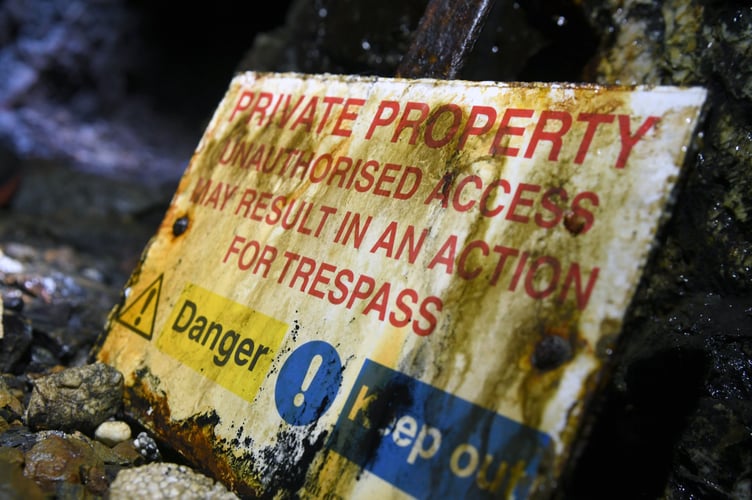
We had each been given a section of timber to take into the mine for later use by the volunteers. The planks were unwieldy but helped provide extra support on the particularly steep and slippy sections of the path.
Our access to the mine was through a cleft in the rock and down some metal rungs into an angled passageway glistening with moisture and traces of ore including the luminous green of copper oxide, our lamps illuminating the orb-like webs of cave spiders.
In places, the way forward was surprisingly spacious with easily enough room to stand in. In others we had to be squeeze through.
It quickly became disorientating as we cautiously negotiated a ladder down a hole in the rock, sidled round a crystal clear pool of seemingly limitless depth and crossed over another on a perilous-looking plank.
Suddenly there was daylight as we came upon the old engine house, its stonework now too dangerous to venture closer.
Another passage, high enough now to walk without head bowed, took us out through an adit onto a cliffside ledge below and to the right of the engine house where we tucked into our lunch, as generations of miners, no doubt, had done before.
It is actually illegal for anybody to venture underground into any of the abandoned mine workings in the Isle of Man, without the appropriate licence.
North Bradda is probably the most accessible of the old workings and there had been worrying reports of children spotted coming out with just flashlights.
‘It’s full of deep open holes inside and we thought the only way to safeguard this is to seal it up.
'DEFA provided the materials and we sealed it up to stop the public getting in and put the appropriate signage up,’ explained Peter.
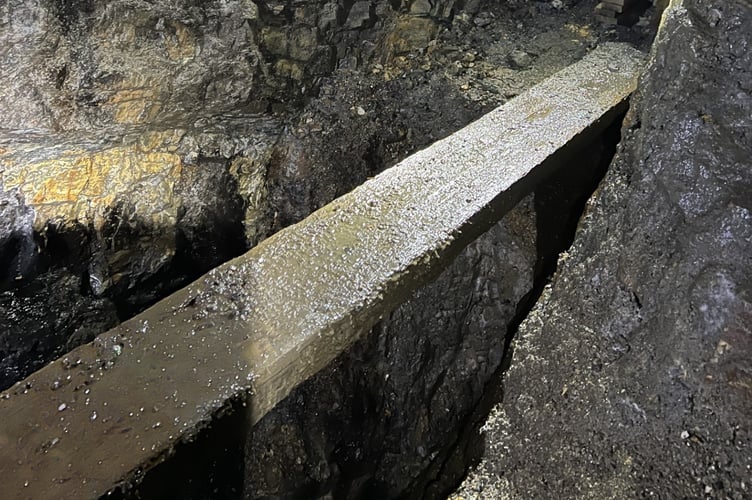
The Mines Group has a memorandum of understanding with DEFA as landowner to carry out survey work of the island’s many historic mines and ensure they don’t present a risk to the public, by capping shafts and sealing adits.
‘We’ve saved the government a great deal of money over the years with the engineering we’ve done for them – probably about £1.5m with all the shafts, capping adits and all the consultancy we’ve provided for them,’ said Peter.
The group has in effect turned North Bradda into an experimental working mine, pulling tons of rubble out of its old tunnels using a kibble (bucket and pulley) system and installing bridges over shafts, ladderways and platforms.
The Bradda mines - North and South – have a long history. They were worked in three periods, dating back to the Bronze Age.
A number of years ago Peter and a mining engineer colleague found an ancient stone hammer head maul dating back to 1200BC at South Bradda.
The Bonze Age miners would have been mining for copper at this time although a great deal of lead was found as well. Peter reckons there must have been Bronze Age trading routes with somewhere like Cornwall that had rich deposits of tin.
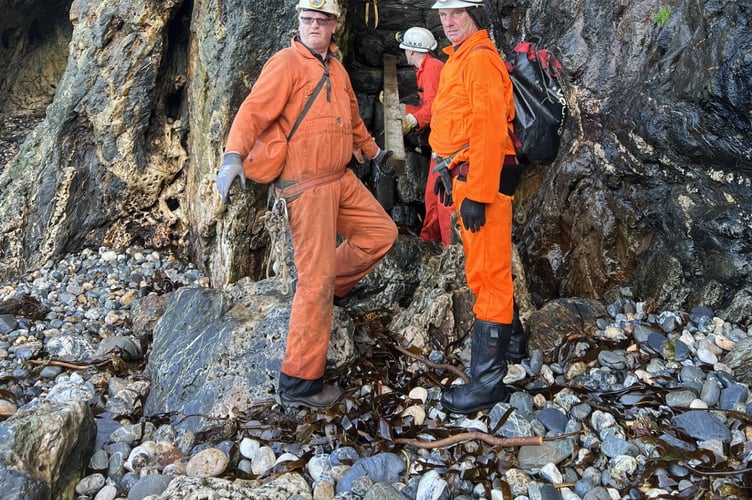
Then in the 12th century the middle lode was worked by the Cistercian monks of Furness Abbey who set up their daughter house at Rushen Abbey.
Mining proper started between 1840 and the site was worked right up to the turn of the century. It stopped when the vein became uneconomic.
Peter said: ‘We’ve so much more to learn about Bradda. It’s going to be ongoing for a great many years.
‘There’s a great deal of Bradda that we’ve not pieced together such as the shipment and full operational details.
‘We know how they kept the mines dry as you’ve seen the engine house which they pumped from 72 fathoms.
'There’s at least 400ft to surface and probably 700-800ft of mine working from the surface. Our interest was that there must be more mine workings in the upper levels.’
There was only one way to find out. The team started building new Cornish-style ladders, cutting rock, setting timbers and building platforms going up to ladderways.
They found a chamber that was exactly as it had been left with bits of old ladder lying around, and copper ore. The team had been excavating for months and broke into a new stope – worked out chamber – and then realised directly opposite there was another tunnel so they started excavating that too.
The volunteers have recently broken out into another chamber that goes out into daylight on a cliff shelf above the engine house.
‘We know there is still quite a bit of the mine above sea level to explore. We will just keep going at it,’ said Peter.
‘We are not 100% sure how they got the ore out. We think initially they were probably bringing it out on small boats from a dock, Later on they sunk a big shaft from the surface. We think it was put in primarily as a haulage shaft.’
There was always reputed to be a legendary lost level connecting South and North Bradda.
Peter said: ‘You always get fabled stories of mine workings.
‘But over millennia the cliff has fallen away and so before mining ever took place here the vein had fallen right down to beach level. The only communication between north and south is reputed to be quite deep down, about 40 fathoms subsea.’
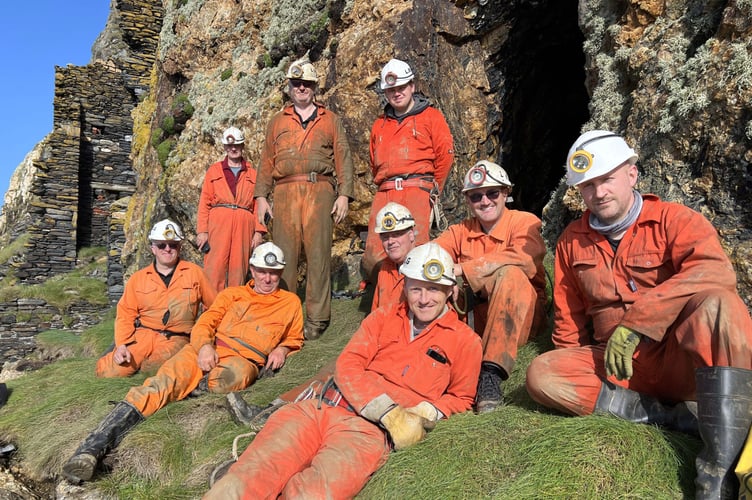
Curiously, there are no known photographs of the North Bradda Mine despite it having operated well into the era of photography. However, a painting has been discovered which shows how the mining structures on Bradda Head would have looked.
Peter is currently working on technical drawings of the side elevations of the various mine sites around the island that will be included on information boards being erected as part of a mining heritage trail.
With clear traces of ore deposits all around us, is there a possibility that the mines could be worked again - perhaps for lucrative rare metals?
Peter said: ‘We had been asked by a couple of Ministers some years ago if there is anything we could expect to get out of the ground these days.
‘You should really avoid deep invasive mining but it might be worth putting out a prospectus for drilling to see if there are any rare earth elements.
‘Whether that comes to anything I don’t know. I don’t think we will be looking at lithium, it’s the wrong minerals, it follows tin really.
‘There have been traces of gold found in the island – but we don’t want to start a gold rush!’
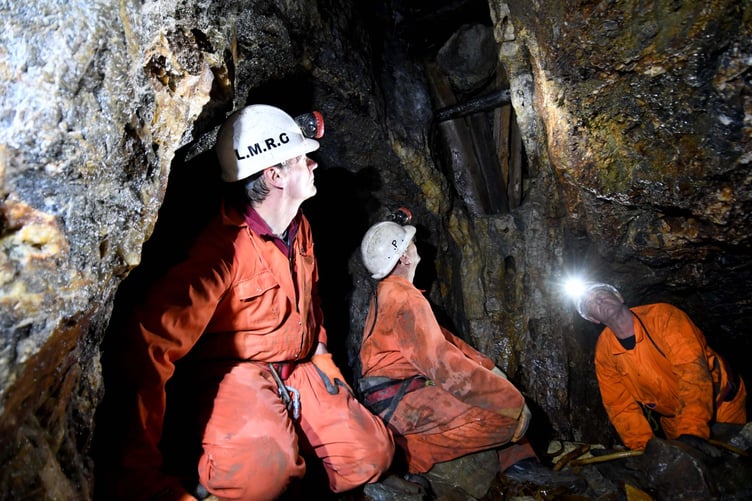
+ 7
(View All)
Exploring North Bradda Mine
Asked what the volunteers’ ultimate aim is, Peter replied, only half jokingly: ‘To get out safely!’
Having emerged from the darkness of North Bradda mine, that’s a sentiment with which we would fully concur.



-and-Barbara-Guy-(right).jpeg?width=209&height=140&crop=209:145,smart&quality=75)
Comments
This article has no comments yet. Be the first to leave a comment.